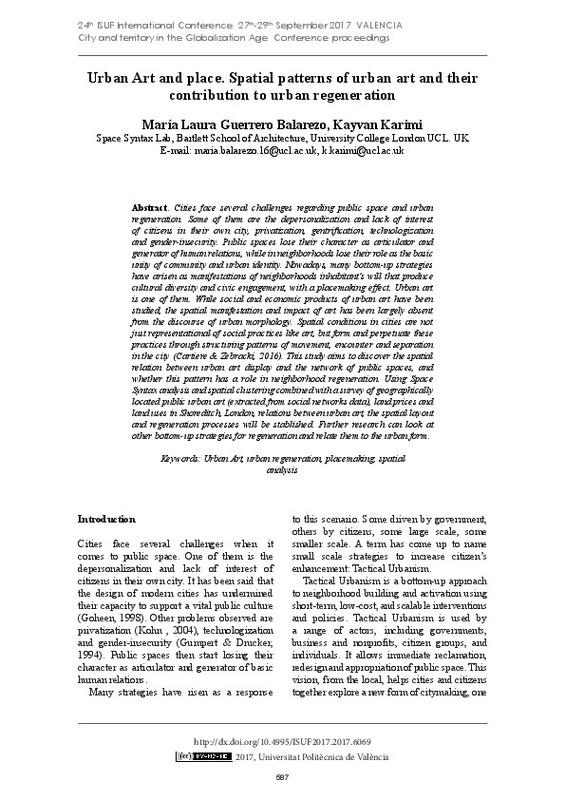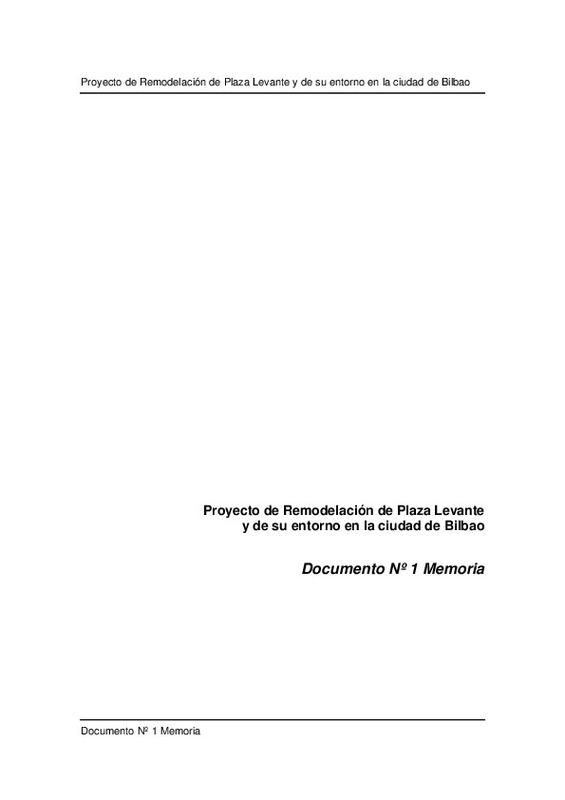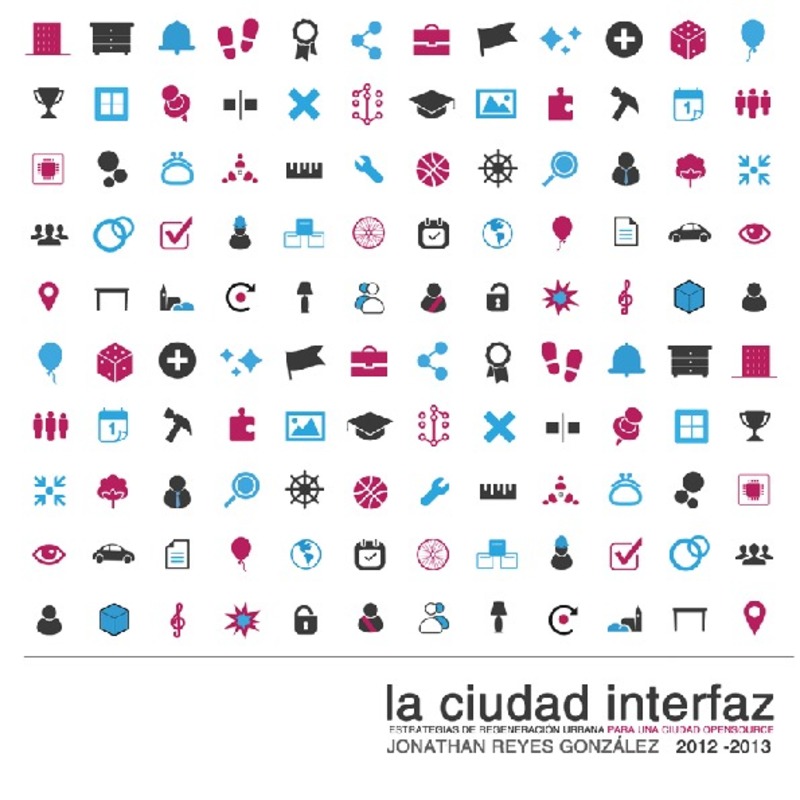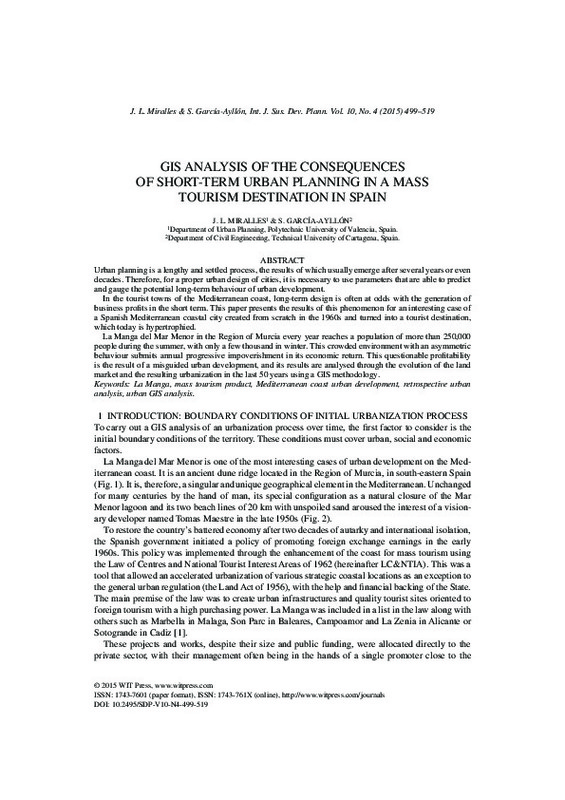JavaScript is disabled for your browser. Some features of this site may not work without it.
Buscar en RiuNet
Listar
Mi cuenta
Estadísticas
Ayuda RiuNet
Admin. UPV
Urban Art and place. Spatial patterns of urban art and their contribution to urban regeneration
Mostrar el registro sencillo del ítem
Ficheros en el ítem
| dc.contributor.author | Guerrero Balarezo, Maria Laura
|
es_ES |
| dc.contributor.author | Karimi, Kayvan
|
es_ES |
| dc.coverage.spatial | east=-0.12775829999998223; north=51.5073509; name=London, Regne Unit | es_ES |
| dc.date.accessioned | 2018-12-28T07:26:26Z | |
| dc.date.available | 2018-12-28T07:26:26Z | |
| dc.date.issued | 2018-04-20 | |
| dc.identifier.isbn | 9788490485743 | |
| dc.identifier.uri | http://hdl.handle.net/10251/114544 | |
| dc.description.abstract | [EN] Cities face several challenges regarding public space and urban regeneration. Some of them are the depersonalization and lack of interest of citizens in their own city, privatization, gentrification, technologization and gender-insecurity. Public spaces lose their character as articulator and generator of human relations, while neighborhoods lose their role as the basic unity of community and urban identity. Nowadays, many bottom-up strategies have arisen as expressions of neighborhood’s inhabitant’s will, producing cultural diversity and civic engagement, with a placemaking effect. Urban art is one of them. Social and economic products of urban art have been studied, but the spatial manifestation and impact have been largely absent from the discourse of urban morphology. Spatial conditions are representational of social practices like art, by structuring patterns of movement, encounter and separation in the city (Cartiere & Zebracki, 2016). This study aims to discover the spatial relation between urban art displays and the network of public spaces, and whether this pattern has a role in neighborhood regeneration. To identify these relations in Shoreditch, London, Space Syntax analysis and spatial clustering were used, combined with a survey of geographically located public urban art (extracted from social networks data). Also, the spatial patterns of land prices and land uses from 1995 to 2016 were examined. Research showed that various types of artwork have a strong relation with certain spatial network characteristics and visibility of locations from each other. Economic and use outcomes were also related to the development of the art pattern through the years. | es_ES |
| dc.format.extent | 11 | es_ES |
| dc.language | Inglés | es_ES |
| dc.publisher | Editorial Universitat Politècnica de València | es_ES |
| dc.relation.ispartof | 24th ISUF International Conference. Book of Papers | es_ES |
| dc.rights | Reconocimiento - No comercial - Sin obra derivada (by-nc-nd) | es_ES |
| dc.subject | Urban art | es_ES |
| dc.subject | Urban regeneration | es_ES |
| dc.subject | Placemaking | es_ES |
| dc.subject | Spatial analysis | es_ES |
| dc.title | Urban Art and place. Spatial patterns of urban art and their contribution to urban regeneration | es_ES |
| dc.type | Capítulo de libro | es_ES |
| dc.type | Comunicación en congreso | es_ES |
| dc.identifier.doi | 10.4995/ISUF2017.2017.6069 | |
| dc.rights.accessRights | Abierto | es_ES |
| dc.description.bibliographicCitation | Guerrero Balarezo, ML.; Karimi, K. (2018). Urban Art and place. Spatial patterns of urban art and their contribution to urban regeneration. En 24th ISUF International Conference. Book of Papers. Editorial Universitat Politècnica de València. 587-597. https://doi.org/10.4995/ISUF2017.2017.6069 | es_ES |
| dc.description.accrualMethod | OCS | es_ES |
| dc.relation.conferencename | 24th ISUF 2017 - City and Territory in the Globalization Age | es_ES |
| dc.relation.conferencedate | Septiembre 27-29,2017 | es_ES |
| dc.relation.conferenceplace | Valencia, Spain | es_ES |
| dc.relation.publisherversion | http://ocs.editorial.upv.es/index.php/ISUF/ISUF2017/paper/view/6069 | es_ES |
| dc.description.upvformatpinicio | 587 | es_ES |
| dc.description.upvformatpfin | 597 | es_ES |
| dc.type.version | info:eu-repo/semantics/publishedVersion | es_ES |
| dc.relation.pasarela | OCS\6069 | es_ES |











